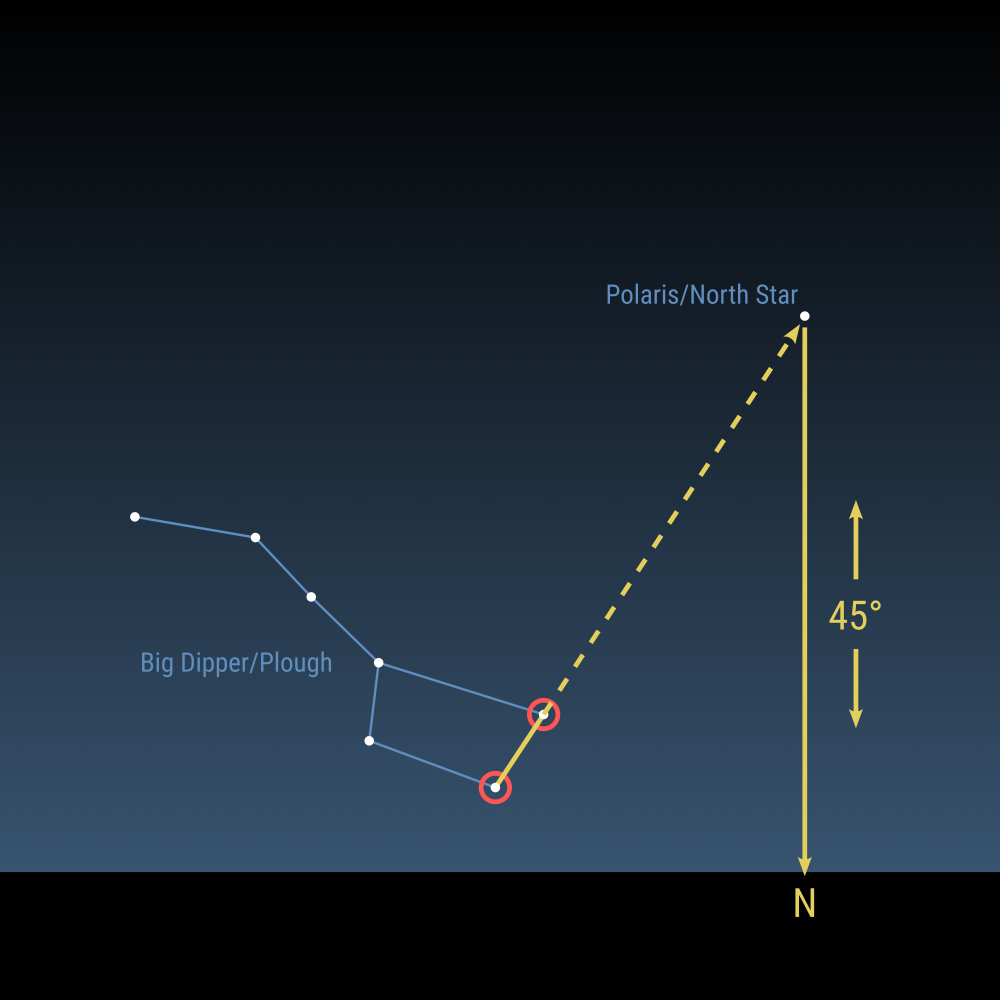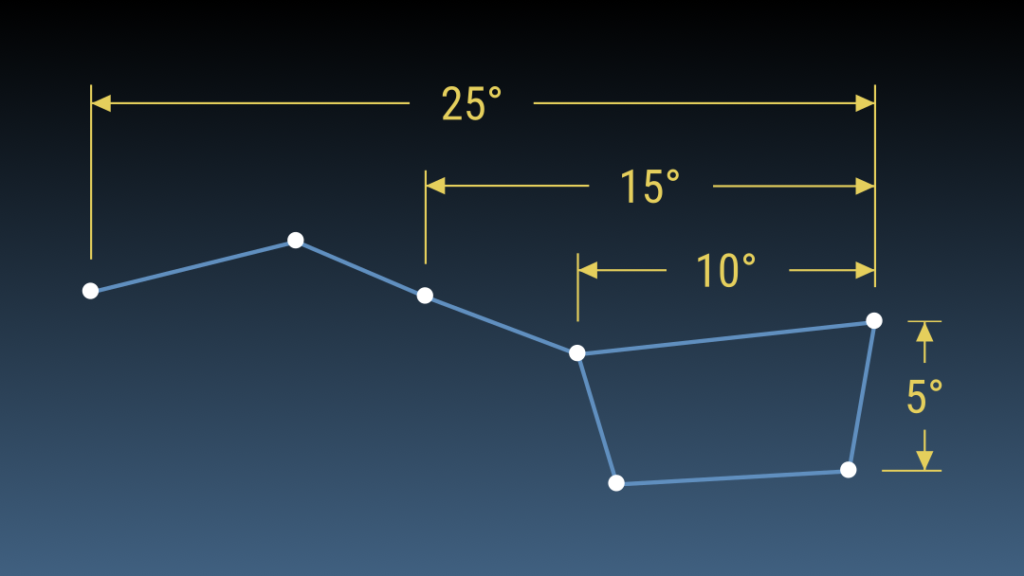The North Star, also called Polaris, is one of the most famous stars in the night sky. In this article, you’ll learn about the North Star, discover how you can find it, and how you can use the North Star for orientation and location determination on Earth.
About the North Star or Polaris
The North Star or Polaris is a star in the constellation of Ursa Minor. The star is about 430 light-years away from us, which also means that the light from the star takes about 430 years to reach the Earth!
Polaris is a yellow giant star approximately 5.5 times heavier than the Sun. The North Star is about 70 million years old. That sounds very old, but in astronomical terms, it’s actually quite young. Our Sun, for example, is 4,600 million years old, more than 65 times as old as the North Star!
Polaris owes its fame to the fact that the Earth’s axis points (approximately) in the direction of the star
The North Star is a well-known star. And that’s not because it’s so bright (so it’s not the brightest star in the sky!) In fact, it’s even a bit of an inconspicuous star. But Polaris owes its fame to the fact that the Earth’s axis points (approximately) in the direction of the star. So, the North Star is always in the north: incredibly useful to know when you are navigating at sea!
We will explain later how you can use the North Star for navigating and orienting on Earth. First, we’re going to discover how we can find the North Star among all the other stars in the sky.
How to find the North Star
Since the North Star is not such a noticeable star, it can sometimes be difficult to spot it in the night sky. I’m now going to teach you a simple trick to find the North Star. Try it out tonight if it’s clear!
Step 1: Find the Big Dipper or Plough
The first step in finding the North Star is to look for the Big Dipper or Plough, the well-known star pattern of seven stars that is part of the constellation of Ursa Major. The Big Dipper can always be seen on clear nights from mid-northern latitudes (North-America, Europe). Sometimes it’s low over the northern horizon, sometimes right above your head, but it can be found every night!
Finding the Big Dipper or Plough is the most difficult step on the way to the North Star. But the asterism consists of bright stars, so you’ll notice that you can always discover it fairly quickly. And the more often you look for it, the faster you can spot it!

Step 2: Draw an imaginary line between the two stars at the end of the Big Dipper or Plough
Once you’ve located the Big Dipper, look for the two bright stars at the end of the dipper. Not on the side of the handle, but on the other side of the “pan”. These two stars are called Merak and Dubhe. Now, draw an imaginary line between these two stars.

Step 3: Extend this imaginary line
Now extend the line that you’ve drawn in your mind between these two stars in such a way that the line ‘shoots out’ of the Big Dipper. As if the “pan” is overflowing! In the images in this article, that’s “upwards”, but in other seasons it might be downwards or to the side.

If you extend this line about 5 times, you will encounter a fairly bright star, about as bright as the stars of the Big Dipper between which you drew the imaginary line. This is the North Star! This trick always works, no matter where the Big Dipper is in the night sky, the line between these two bright stars of the dipper always points to the North Star.
Congratulations! You have now found Polaris the North Star. What can we now learn with the help of the North Star? Read on!
How can you orient yourself with the help of the North Star?
Now that you have found the North Star, it is interesting to find out what you can read from this star and how you can use it to navigate on Earth.
As mentioned before, the Earth’s axis points roughly in the direction of Polaris. This has not always been this way and will not always be so, but fortunately, we live in a time when that’s just the case. Super convenient!
Easy: finding the north
With the help of the North Star, you can always find the north. This is how it works: draw a line from the North Star straight down to the horizon. Where this line touches the horizon, that’s the north! And if you know where the north is, you also know where the east, south, and west are. So, you can orient yourself! No wonder Polaris was so important for ships at sea.

A bit harder: determining your latitude
Something else you can deduce from the North Star is the latitude at which you are located. Latitude indicates how far you are from the equator and the North Pole. A hemisphere on Earth is divided into 90 such latitudes. The equator has a latitude of 0 degrees, the North Pole a latitude of 90 degrees.
The height of the North Star above the horizon is equal to your latitude. At the equator, the North Star is at 0 degrees, so right on the horizon (you can’t see it then), at the North Pole Polaris is directly above your head (that’s 90 degrees).

To accurately determine the height of the North Star above the horizon, you need an instrument to measure angles in the night sky. Fortunately, you can easily estimate these so-called angular distances using the Big Dipper or Plough. This image helps you with that:

If you are on a familiar location, you probably roughly know at what latitude you are located. But you can imagine that if you are somewhere in the middle of the ocean, it is extremely useful to know at what latitude you are sailing. This way, you can precisely determine your course. It’s fun to try this latitude-measuring trick at your holiday destination: can you determine your latitude using the North Star?
Conclusion
In this article, you have learned about the North Star or Polaris, discovered how to find it, and what important information you can determine with the help of the North Star. Did you manage to spot Polaris? Let me know in the comments or tag me on social media!
Do you want to stay informed about upcoming events in the night sky? Follow Waddensky on Instagram or Twitter, or download our Nightshift app!